Our Services
Our Services
Bunions are located at the big toe joint and are a large often painful
An ingrown toenail is pain, swelling and sometimes infection of the soft tissue next to the nail plate. It may be caused by injury, improper nail cutting or the shape of the nail plate. Treatment may include temporary or permanent removal of one side of the nail back to the cuticle. To prevent recurrence of the problem a chemical may be placed on the nail root. This procedure is easily performed in the office under local anesthesia. Oral and topical antibiotics may be prescribed if an infection is present.
Corns and calluses develop on the bottom of the feet and on the toes due to friction of skin between the bones and the shoes or ground. They are layers of thick dead skin which initially helps protect the areas of friction but as they thicken increase pressure causing pain in the area. Treatment includes periodic shaving of the extra dead skin layers, prescription creams, custom made inserts worn in the shoes to alleviate pressure points and outpatient surgery to straighten the toes or shift the position of the bones.
Warts are an infection in the skin caused by a virus. They appear as solitary bumps in the skin or may be present in clusters. Dark small dots are often visible within the skin layers and are due to the blood vessels present in the lesion. They are spongy to touch and are often painful to walk on. Treatments include topical acid medication, freezing with liquid nitrogen, injections of medication, laser surgery, burning or cutting them out. Unfortunately they have a high recurrence rate with all treatment modalities.
Cracks can occur in skin that is either very moist and sweaty or is very dry. Skin is the barrier between the body and the environment. If it is cracked, broken or peeling bacteria can get in and infections can occur. Dry skin may be due to occupational, environmental or medical conditions. Cracking skin is painful and may be difficult to heal. Treatment includes trimming of cracked edges and prescription creams or lotions as well as determining the cause and controlling it.
Thick toenails may be caused by fungus infection, injury to the nails, heredity and environmental conditions. Thick toenails are difficult to trim and may cause pain by pressure of shoes. Treatment involves determining the cause. If it is fungal then topical or oral medications may be prescribed. If previous injury or heredity is involved than treatment may include routine trimming and filing along with use of nail softening medications. Nail thickness due to underlying medical conditions such as psoriasis may need referrals to dermatologists or primary care physicians.
Heel pain is a common condition treated by podiatrists on a daily basis. Symptoms include pain when getting up after rest in the heel which may resolve temporarily only to recur later as activity increases. Injury is not a common cause but may precipitate the pain. There may be inflammation with swelling, local warmth and mild redness. It is often referred to as a “spur”. A heel spur is a slight outgrowth of bone seen on an xray and is due to the pull of the plantar fascia, a thick ligament that attaches to the heel bone and goes out along the bottom of the foot inserting into the ball of the foot. Not all persons with heel pain have a heel spur. The pain is due to inflammation of this ligament at its attachment to the heel. Treatment includes: stretching, shoe inserts, ice, medication, injection of cortisone, night splints and surgery. This condition often resolves without surgery but may take up to 6 months to heal.
Infections of the skin and nails caused by organisms called fungi are frequent in the feet. Fungal infections of the nails is called onycomycosis and cause thickening, loosening and deformity of the nail plates. It starts at the tips of the nail plate with colored streaking and progresses until the entire nail plate is involved loosing is clear appearance to a dull, flaky, thickened, crumbling nail. It can be painful and is often difficult to trim. A culture can be taken of the nail plate to verify the infection. Treatment includes oral medication, in-office painless use of laser, topical medication with early initial infection of the nail or if medication is contraindicated often routine maintenance by a podiatrist to mechanically file down the nail thickness and trim the nail length. Often associated with nail fungus and often precipitating it is the fungal infection of the skin referred to as “athlete’s feet” or tinea pedis. This is often thought of as itching, wet, peeling skin but also may be asymptomatic and appear as dry skin that does not respond with creams or lotions. Prescription topical medication is effective along with good hygiene and prevention. It is often recurring.
Black or bluish color under the nails is usually caused by injury where blood accumulates under the nail plate. It can be very painful if there is enough pressure due to the inability of the blood to drain or the nail plate to expand like soft tissue. It often requires drainage by removal of the nail plate or drilling a small hole in the nail plate to allow the fluid to escape. Eventual temporary loss of the nail plate is inevitable.
Pain in the forefoot is often the result of a neuroma. There are small 
Flatfeet may or may not be painful. This condition is often congenital meaning the foot structure one is born with. Less often is occurs when the tendons and soft tissue structures weaken over time and are incapable of holding up the arch. Most often it is treated by supporting the foot usually by shoe inserts. More severe cases may require bracing across the ankle or surgery. Surgery may include placing an implanted material in the joint below the ankle to act as a sort of door stop preventing this joint from further motion, tendon transfers or bone surgery to fuse bones in the arch area that normally have a joint or space between them to make them rigid.
Tendons are the structures that attach muscles to bones allowing their movement. These structures may become irritated due to activity or strain. Symptoms include pain especially with movement, swelling, warmth and redness. Treatment requires RICE an acronym for rest, ice, compression and elevation. Once the inflammation is reduced a gradual return to activity possibly guided by a physical therapist is recommended. For chronic tendonitis and
Arthritis is inflammation and wearing down of a joint. It may result from different causes. Injury often accelerates joint wear by nicking up the smooth joint surfaces and stretching out the tight soft tissue structures destabilizing the joint. Medical conditions such as rheumatoid arthritis, systemic lupus, reiters syndrome, anklyosing spondylitis and scleraderma are various autoimmune conditions which cause inflammation even destruction of the joint surfaces and surrounding soft tissues. Treatment initially requires identification of the cause of the joint pain by lab testing, xrays, medical and family history. Treatment includes physical therapy, medication, bracing and surgery.
Diabetic patients have special podiatric needs. Diabetes is a multiorgan disease meaning that its affects are seen in many areas, cardiac, neurologic, renal, retinal, dermal and podiatric. Diabetic foot care is paramount. Loss of feeling in the feet increases the chance of injury. Even minor insults that go unnoticed can evolve into more severe complicated problems. Circulatory disease can affect healing. Diabetes causes dryness and loss of elasticity of the skin. The skin protects the body. Broken skin can allow bacteria, fungus and viral infections to invade the body. Ill fitting shoes can cause blisters and lead to ulcerations or open sores. Infected ulcerations increase the chance of limb loss due to amputations. Routine foot care may help to prevent skin breakdown and problems. Periodic visits to a podiatrist to assess any changes in circulation and sensation with trimming of thick nails and calluses can significantly reduce the incidence of infection, hospitalization and surgery. Patients with diabetes are often fitted with diabetic shoes that are deeper and have special inserts to protect pressure points. Our office has many appealing styles and colors.
Pressure areas on the feet will develop thick layers of dead skin called calluses or ulcerations. If they become too thickened the living skin underneath may be killed by the pressure. Healthy persons would feel pain in these areas and seek treatment. Some diseases like diabetes or neuropathy affect the amount of feeling in the feet. Left untreated as the skin dies a sore develops which can become infected. Treatment involves removing areas of pressure with insoles or shoes. Thickened skin is shaved. Medication or surgery to clean up dead infected skin may be required. Prevention is the key to prevent loss of limb. Persons with loss of feeling are instructed to inspect feet daily to check for blisters or reddened areas. A discussion of shoe styles is paramount. Assessment of blood flow or circulation is significant in determining the body’s ability to heal the pressure sore.
Peripheral neuropathy is a term used to describe loss of feeling in the extremities. It may be due to localized entrapment of a nerve or generalized loss of nerve function from medical conditions. Symptoms vary from loss of feeling, burning, tingling, crawling sensation and weakness. Inability to sense pain increases risk of injury to the part. Pain is your body’s way of letting you know something is wrong forcing you to change your activity. Without this mechanism there is an increased risk of bodily insult. A medical history is needed to check for medical conditions such as diabetes. Sensory testing is performed to identify the area involved. Nerve studies may be ordered. Treatment of peripheral neuropathy is based on the source of the condition. Keeping tight control of blood sugar levels if the patient is diabetic, reducing mechanical pressure on the nerve if the condition is a localized entrapment. Medications may be prescribed as well as physical therapy or surgery to decompress the nerve. If untreated over time permanent nerve damage and loss of extremity function may occur.
Gout is a condition that occurs when excessive uric acid is produced by the body. Uric acid is made from the break down of certain foods. The serum of the blood can only contain a limited amount of this by product. If excessive amounts are produced the extra amounts are collected in the joints usually in the feet and toes. These crystals cause a severe inflammatory process to occur. There is intense pain, swelling, redness and heat. This can be a hereditary condition but may also be related to medication use and diet. Treatment is aimed at reducing the inflammation and helping the body to eliminate the extra uric acid. Blood tests are ordered to confirm the condition. Xrays are taken to check for changes in the bone or joints. Daily medication may be given to prevent or reduce repeated gout attacks.
Orthotics are custom molded shoe inserts that are prescribed for a variety of foot conditions. They are made from a plaster mold or foam impression of a person’s foot. The mold is sent to a laboratory with specific instructions for the fabrication given by the doctor. The device is made to the cast impression. Orthotics are used for support, to control foot function, to reduce pressure areas and absorb shock. Insurance plans vary on coverage of these appliances. Medical necessity with a doctors letter is often required.
Changes may occur as a child develops. Their bodies grow and change at a rapid rate. The bones are not fully formed at birth. Babies’ feet are quite flexible and may be misshapened from intrauterine position. As toddlers the legs and feet become stronger to hold the body weight and begin walking. Injury can damage the fragile growth plates in the bones causing them to close prematurely or unevenly. The child may appear flat footed, intoed or out toed. An exam of the feet and lower legs can determine if your child is growing correctly. Positional problems of the child’s feet are often treated with corrective shoes, splints, braces or shoe inserts. Xrays can be used to evaluate the child’s growth plates, the areas of the bones that allow the bones to grow as well as the angles of the bones and joints of the growing child. Injuries may require casting or splinting to protect the growth plates during healing. Occasionally the growth plates of the child’s bones may become irritated by growth spurts if the tendons attaching to these areas do not grow or stretch as fast as the bones. Common areas where this occurs is in the heel, knee and outside of the foot at the 5th metatarsal base. These conditions are usually self limiting but may require medication, physical therapy, shoe inserts or taping/strapping. Children’s feet and legs should not hurt as they grow.
Many conditions especially those not responding to conservative care may require surgical intervention. Minor procedures such as nail surgery, wart removal and a few soft tissue procedures may be performed in the office. Other conditions may require outpatient surgery at accredited facilities such as a hospital or surgery center. This allows for access to special equipment, sterile environments and assistance by trained professionals such as anesthesiologists and surgical technicians. Dr. Sink is board certified in podiatric surgery and has surgical and admitting privileges at Silver Cross Hospital, Joliet, Ill, Provena Saint Joseph Medical Center, Joliet, Ill, Advocate South Suburban Hospital, Hazel Crest, Il and Silver Cross Hospital, New Lennox, IL.
Dr. Sink is certified in laser surgery. There are various types of lasers used
Dr. Sink prescribes and fits diabetic shoes in the office. There are a variety of stylish designs and colors available at a reasonable price. These may be covered under some insurance plans and Medicare.



